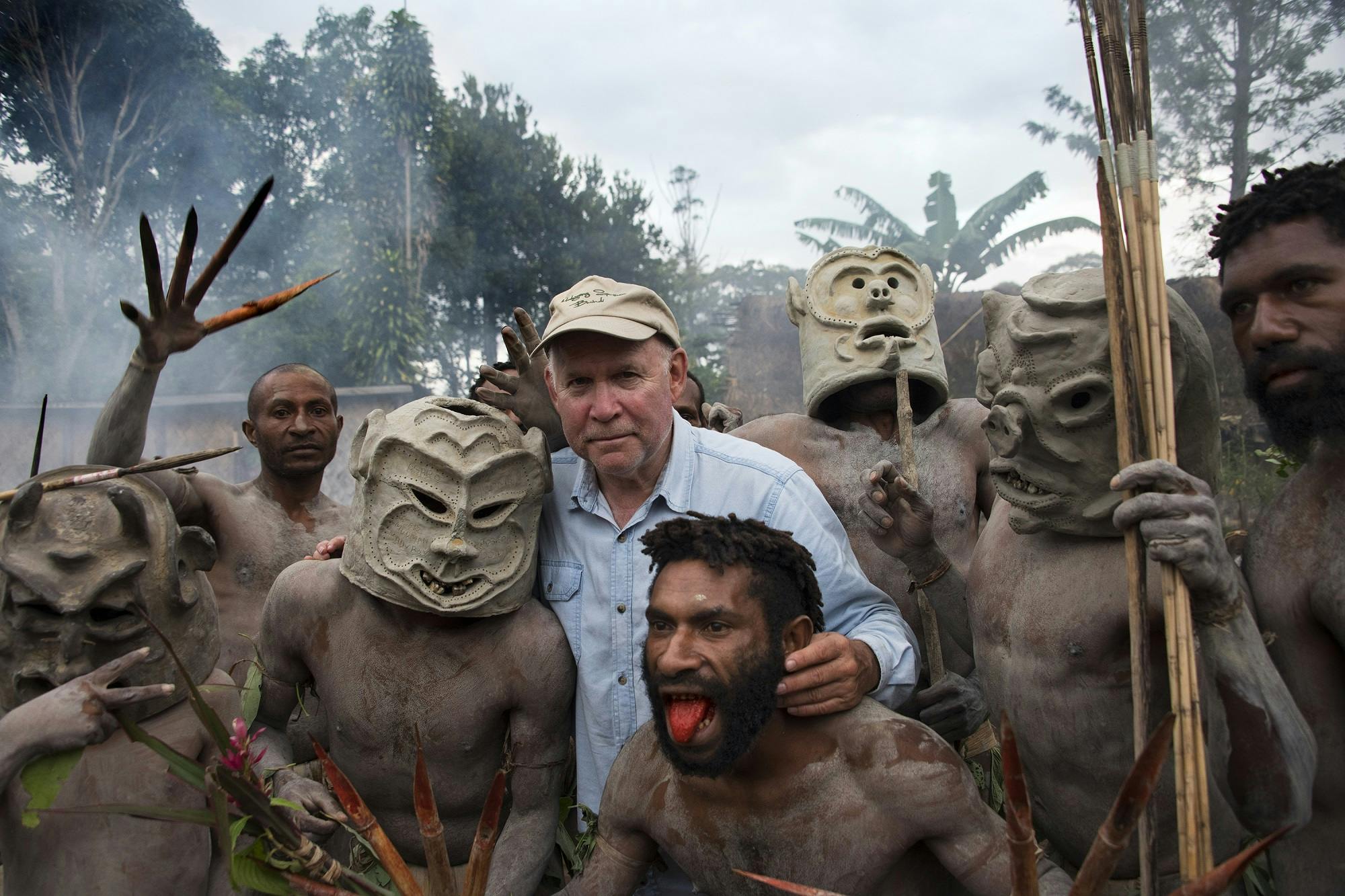Steve McCurry Selects his Favorite Images from his Travels with Silversea
Silversea’s joint venture with Steve McCurry has allowed him to travel even deeper and further off the beaten track than he ever had before – in almost 50 years of career, this is quite a feat! He chooses his destinations carefully, always looking for, hoping for, the moment that matters. In three years of traveling with the cruise company, he has visited over 30 destinations and plans to visit many more. Here, he gives us his top ten favorite images so far.
10. A Camel Herder in Petra, Jordan

Here’s why: Camel herders in Jordan date back to the 1st century and are as important today as they were then. Petra’s rich heritage is simply stunning, but it was the unguarded moment of people going about their daily lives in such a place that best captured Steve McCurry’s attention.
Steve tells us: “I have always enjoyed my time in Jordan. In a part of the world that is turbulent and sometimes precarious, Jordan has managed to maintain stability while adapting to modernity and absorbing millions of refugees. The ancient tradition of hospitality has stood the country in good stead and is lived out in all levels of society. Petra, known as the Rose City, was carved out of stone thousands of years ago, and is one of the most fascinating archaeological sites I have photographed.”
9. Flower Vendors in Oaxaca, Mexico
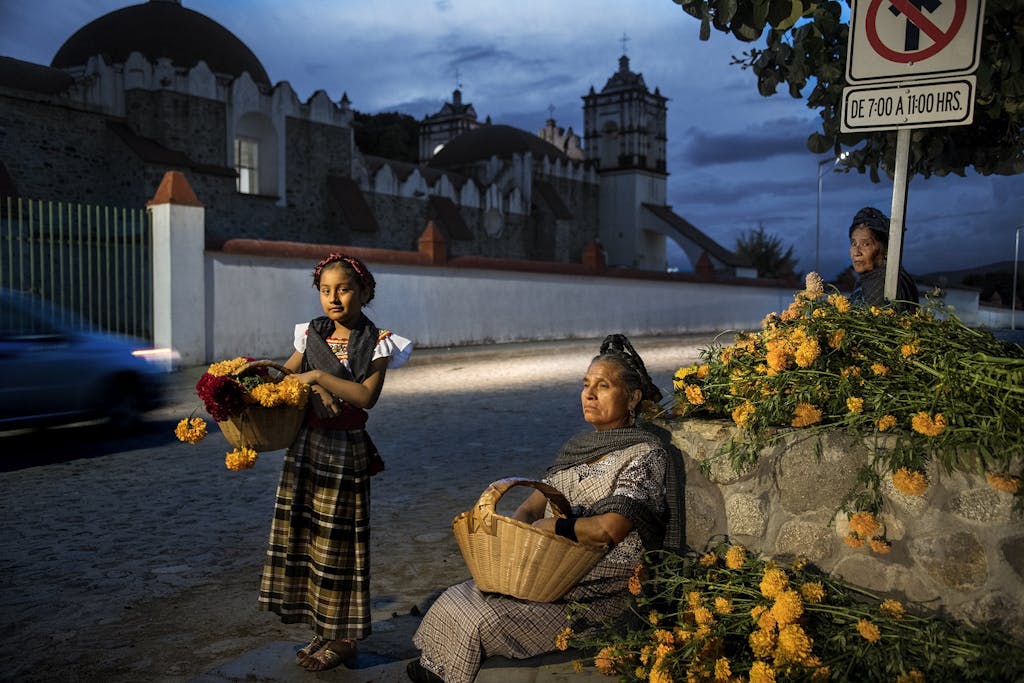
Here’s why: The celebrations of Dia de Los Muertos (or Day of the Dead) are as happy as they are sad. Hundreds of families mourn the passing of loved ones into the next world with parades, colorful costumes and elaborately decorated altars. But it is also a genuine moment of grief, particularly during the graveyard “celebrations” that take place at night. Graves are decorated with hundreds of marigolds, used to guide the spirits home because of their fabulous color and scent. A nighttime vigil then takes place, and while it is a sombre affair, many find release during those 12-hours.
Steve tells us: “A family of flower vendors in Oaxaca, Mexico, going to the market to sell. Flowers are an important tradition for Day of the Dead; relatives will take them to the gravesites.”
8. An Eagle Hunter in Mongolia
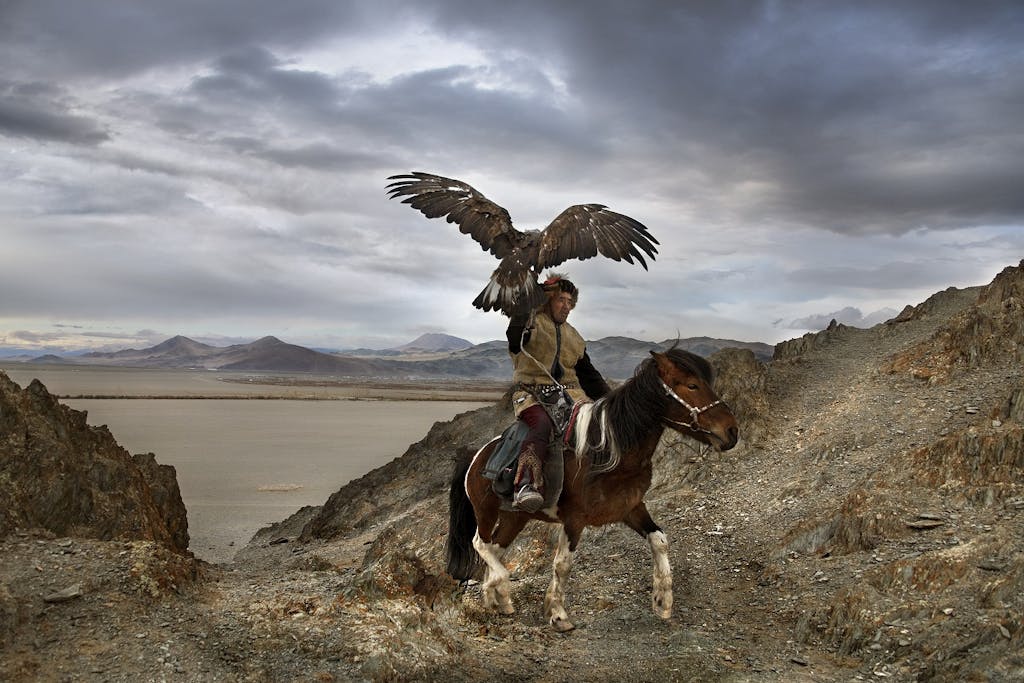
Here’s why: Only about 300 eagle hunters remain in Mongolia. The eagles are domesticated, fed by hand, and are trained to hunt for foxes and hares for the family. The bond between bird and handler is just incredible, a true synergy of nature and nurture. This hunter – a Kazakh nomad – will keep his bird for 10 years before releasing it into the wild.
Steve tells us: “I have been curious about the nomadic people and how they are preserving their tradition, culture, and lifestyle within the global and modern environment. I met inspiring people who are living comfortably in the most extreme condition. I was deeply moved by the reindeer herders of the taiga, and the Kazakh people of the Altai Mountains, who survive harsh winters by hunting with eagles. It’s remarkable how they live in harmony with an undisturbed wilderness. This picture shows the arid environment and how difficult it is for this unique community of eagle hunters to live in the desert condition. This tradition foes back to thousands years, this was a way of survival to hunt and bring food to your home and animal skins for clothing.”
7. A Market Vendor in Quito, Ecuador
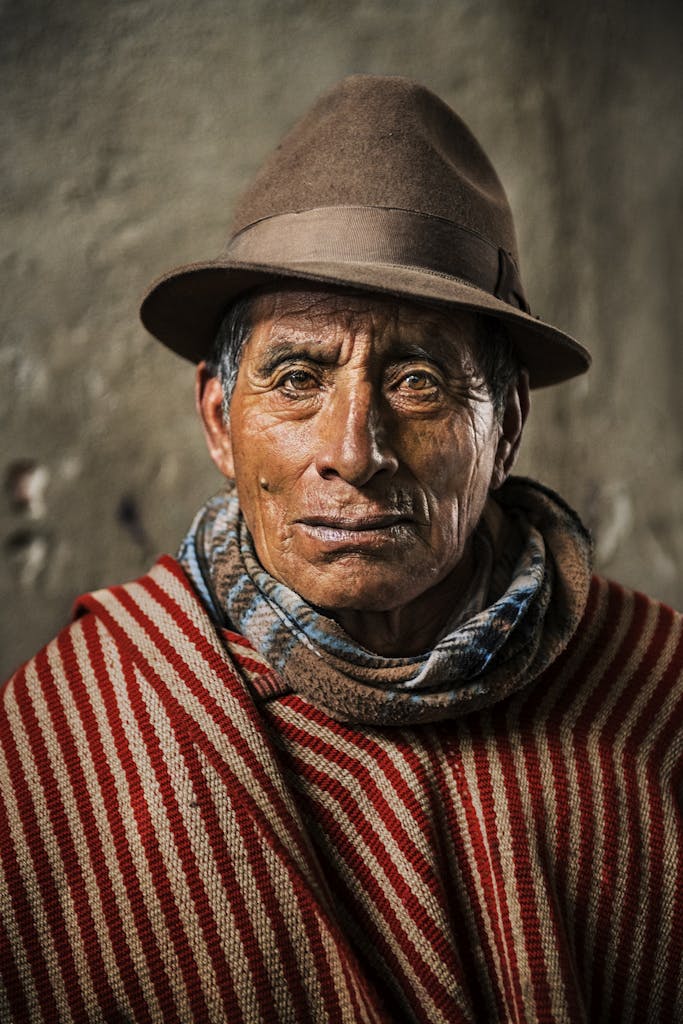
Here’s why: Traditional markets in Ecuador and the Andean region are an especially important part of local life. You can find everything at one of these; from Panama hats to medicinal plants to fresh meat, fruit and vegetables. Hundreds of people flock to the weekly stalls, many of which are only open for a couple of hours, before they pack up and go to the next village. These indigenous markets express the old customs, which still play a vital role in the multicultural society from Ecuador.
Steve tells us: “I was at this market in a town outside Quito. I asked some of the vendors if they would agree to be photographed. They agreed and I photographed them in front of a wall a few feet from where they were selling their produce. I had to work with them quickly, photograph them where they were. I like the fact he is wearing more traditional clothes.”
6. An Artist in Ragusa, Sicily

Here’s why: Ragusa, a tiny village in the south of Sicily, is well-known for its traditional folk art heritage. However, the tradition, kept alive by just a handful of skilled artisans, is slowly dying as younger generations leave the island for the mainland. Originally meant as a way of distinguishing carts from neighboring provinces during saint’s day parades, the tradition has permeated into everyday objects such as puppets, tables and chairs. Steve stumbled across this atelier run by two young men during an afternoon stroll. The mix of color, tradition, craftsmanship and beauty proved to be a perfect subject for him!
Steve tells us: “I met this Sicilian artist in Ragusa who decorated a lot of unusual things, like his very small Fiat car, done in the most creative way.”
5. A Walrus in Svalbard
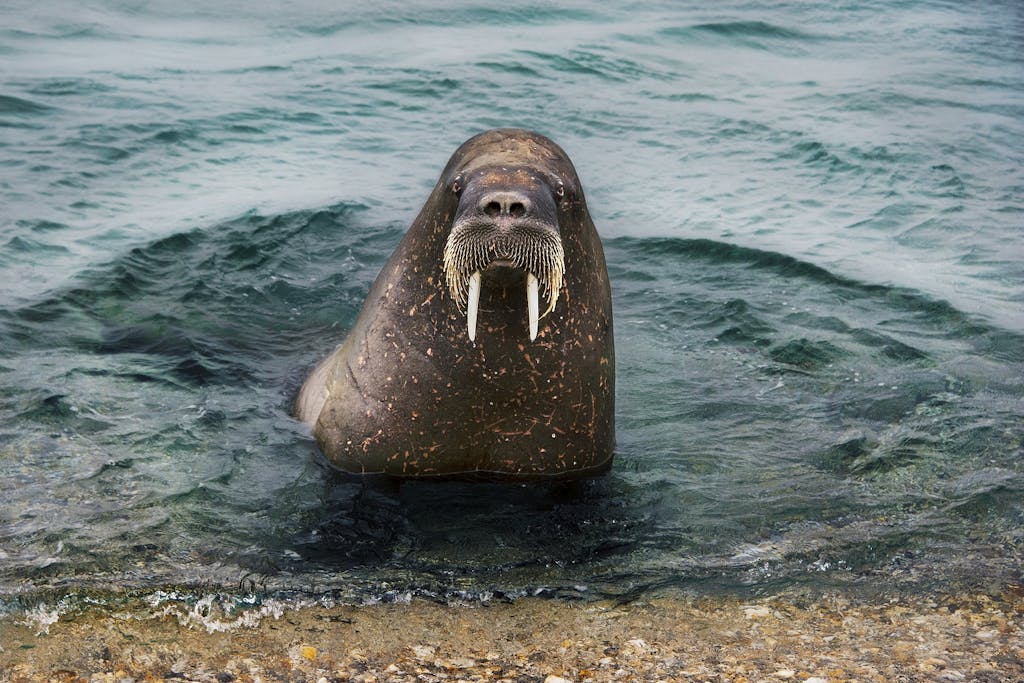
Here’s why: The Atlantic walrus is an amazing animal – they can weigh more than 3,000 pounds, measure up to 12 feet and can breathe for 30 minutes underwater. Having been around for millions of years – between 20 and 26 million – they have evolved to survive in unforgiving and constantly changing icy environments.
Steve tells us: “My first trip to Svalbard, in the Arctic Region was in 2017. Having the chance to capture on film the untouched natural beauty of Svalbard is both a gratifying and humbling experience.”
4. A Seal and her Pup in the Galapagos Islands

Here’s why: The Galapagos Islands have been one of Steve’s favorite destinations so far. They are everything to the curious traveller; wild, enigmatic, pristine and very, very, far, to say that Steve fell in love at first sight with the destination would be no overstatement. The Galapagos Islands are truly a unique environment where every single moment that you spend ashore is an example of evolution in practice – it comes as no surprise that Steve wants to visit every inch of these “enchanted islands”, time and time again.
Steve tells us: “It was always my dream to visit the Galapagos Islands; it’s one of the most unique places in the world. On some of the islands, seals are abundant. To be able to wander around and get really close to these animals was an incredible experience.”
3. A Blue-Footed Booby and a Seal in the Galapagos Islands

Here’s why: The raw power of wildlife in the Galapagos Islands is incredible. Yet the escalating climate crisis means that many species are under threat, even in such a remote region. As humans, we have the power to preserve the planet and reverse the mistakes our predecessors have made.
Steve tells us: “The animals are not shy. You can get very close – I don’t know if that exists anywhere else. That was exciting – to be so near to these birds, sea lions, lizards and giant tortoises. It was unbelievable at first to be able to explore the Galapagos Islands on a ship the same way Darwin did. It was a childhood dream that came true.”
2. A Japanese Macaque in Nagano, Japan

Here’s why: In Nagano, northern Japan, there are hot springs and man-made ponds that the monkeys use to keep warm. Japanese snow monkeys get their name because they live in areas where snow covers the ground for months each year – they are one of the only species who live in the cold climate which can be as low -10°C / 14°F.
Steve tells us: “The photograph is such a powerful medium – it freezes a single moment in time. Unlike humans, animals cannot be directed to look this way or that, or wait for the light to be right. These Japanese snow monkeys are completely wild but come to bathe in the thermal pools of the highlands during the winter. I love the power struggle between the monkey and my camera here; there is no doubt who is the alpha male! ”
1. Asaro Mudmen in Papua New Guinea

Here’s why: The tradition of the Mudmen of Asaro in the highlands of Papua New Guinea stems from a tribal war when two rival clans were fighting over some land. It is said that the chief of one of the tribes fell in some mud and reappeared through the mist – the other side thought he was a ghost and fled. Today the tradition is kept alive with these intricate mud masks, decorated with ghoulish faces to keep the evil spirits at bay. The masks weigh almost 10 pounds, yet are an essential part of the tribe’s culture.
Steve tells us: “These are traditional cultural performances. They used to be about tribal rivalry. That’s not really the case now. But this is their heritage. It’s remarkable to see people covered in ash, wearing heavy clay masks. I saw the whole process of transformation. It was taken seriously. This is performance, but it’s authentic and genuine – and true to their traditions.”
